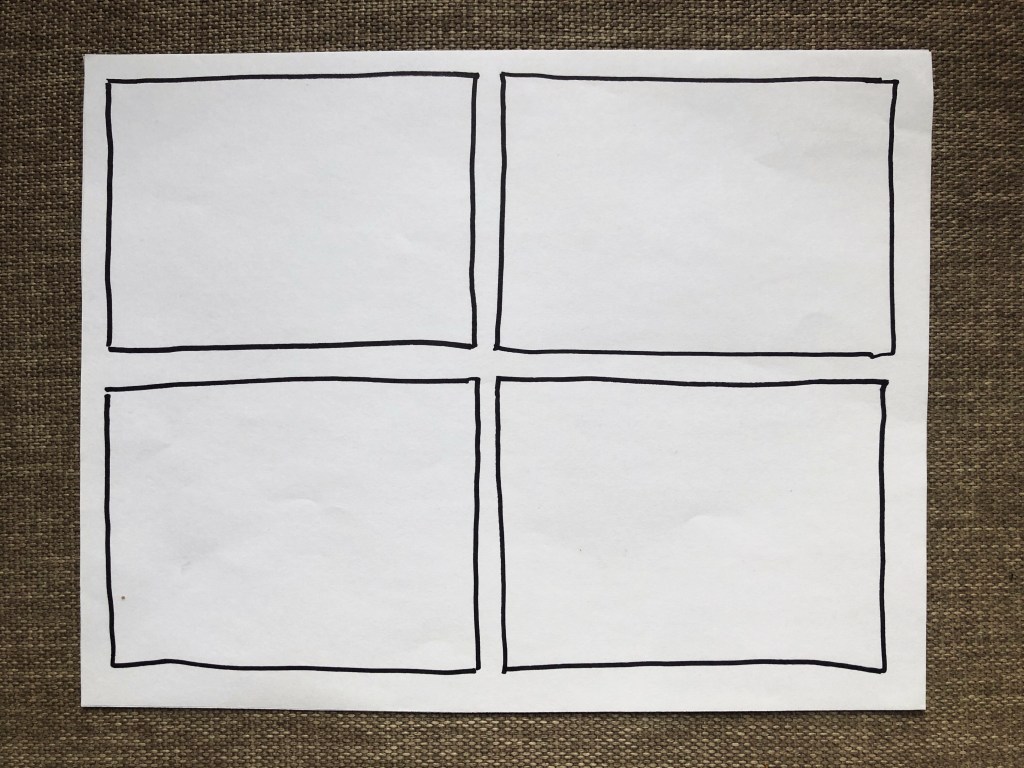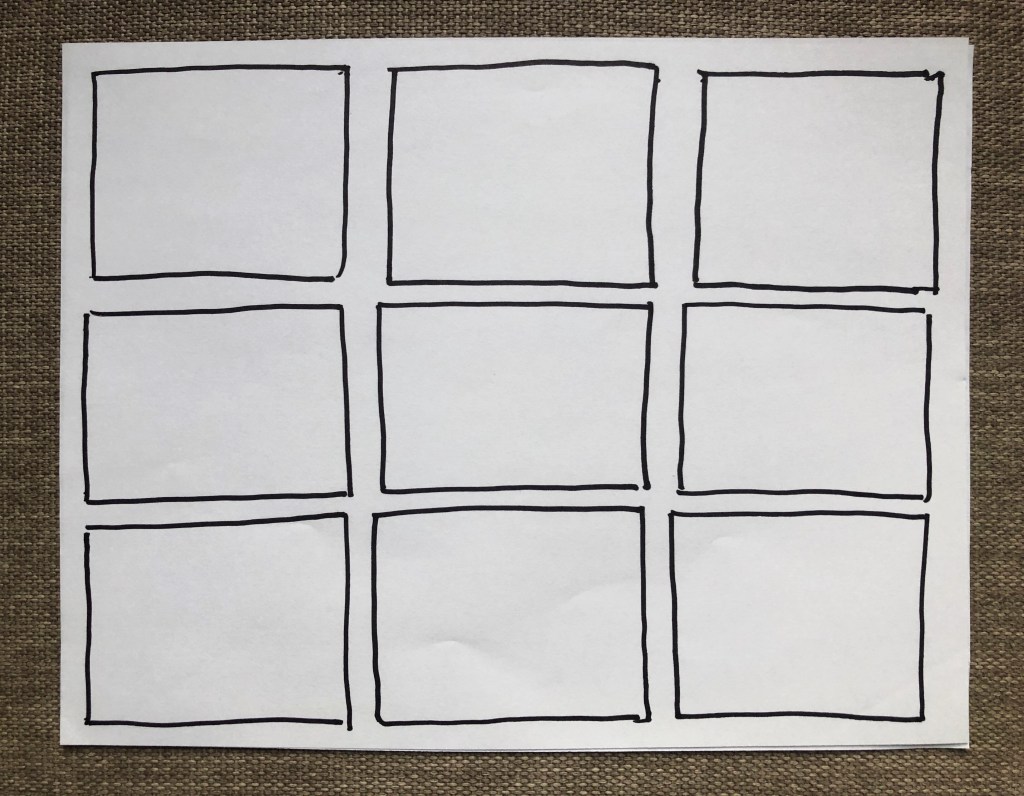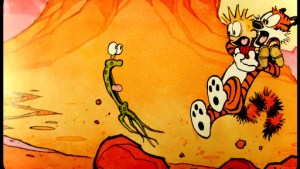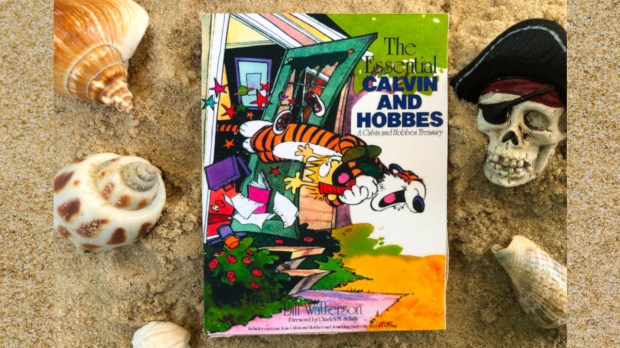When Calvin and Hobbes ended its 10-year run in 1995, the comic strip was still at the height of its popularity. Bill Watterson, its creator, said that producing Calvin and Hobbes had been “a privilege and a pleasure,” but that he had “done what I can do within the constraints of daily deadlines and small panels. I am eager to work at a more thoughtful pace, with fewer artistic compromises.”
Reading The Essential Calvin and Hobbes with your kids, you will find it hard to spot any artistic compromises. The book is a feast of imagination and creativity – which is one of the reasons it appears on Aleteia’s 2023 Summer Book List for Kids.
I do recommend that parents and children read The Essential Calvin and Hobbes together — and aloud. That is what I did with my firstborn son almost two decades ago. He still has his original copies of the Calvin and Hobbes books, though they are now quite dogeared and many of the pages have come loose. Their tattered condition is a sign of the pleasurable hours we spent reading through them over and over again.
Into the mind of a child
Calvin and Hobbes is about the ongoing friendship between the mischievous six-year-old Calvin and a philosophically inclined tiger named Hobbes who appears to be a stuffed animal to everyone but Calvin. They do all the normal things that kids do – go exploring, play in the snow, build treehouses, avoid homework, pretend to be astronauts or dinosaurs. But even the most mundane events take on epic scope and significance because they are generally viewed through the lens of Calvin’s imagination. Bill Watterson uses his stories and drawings to bring us into a child’s mind, where the border between what is real and what is pretend is fuzzier than it is for “sophisticated” adults.
For most grownups, reading Calvin and Hobbes will evoke wistful memories of a time when life was freer and full of possibilities. Kids will simply find the books laugh-out-loud delightful.

The inimitable Calvin…
Part of the fun is that Calvin is not your traditional “good” kid. He’s just a normal boy — often up to trouble and always looking to play a trick on Susie, the girl who lives next door, because he can’t process his feelings for her. Some parents might worry that Calvin does not model proper kid behavior, but I can assure you that my kids, while they delighted in Calvin’s hijinks, never tried to imitate him. Partly that is because when Calvin misbehaves reality generally comes back to bite him in unexpected and hilarious ways.
… and a philosophically sophisticated jungle cat
But reading Calvin and Hobbes is also a form of release for kids. Boy and tiger express many of their own fears and anxieties, and their rebellious feelings toward all the expectations and demands that the adult world often seems to force upon them. The comic also has a surprising philosophical side, and while I doubt many kids are as sophisticated in their existential queries as Hobbes the tiger, they do often wonder about what life, death, and the universe are all about.
In fact, in reading Calvin and Hobbes with your kids, you may make the surprising discovery that you share the same questions that they do. In that sense at least, none of us ever really grows up, thank goodness.
Note: Like most kids, Calvin is sometimes exposed to things from the adult world that he does not understand. Very occasionally he will refer to the sex and violence that he sees on TV. This is Watterson’s commentary on the vapidity of modern culture. Also, Calvin can have a fairly violent imagination (expressed in a fanciful and humorous way), as many boys of his age do. As with any book you bring into your home, take a look at The Essential Calvin and Hobbes first and make sure you are comfortable with the contents.
ACTIVITYLearn storytelling with Calvin and Hobbes
Bill Watterson, the creator of Calvin and Hobbes, is a master of narrative form. I have often shown students strips from Calvin and Hobbes when I am trying to teach them the basic elements of storytelling.
You and your kids can learn a lot about how to tell a good story simply by looking at your favorite Calvin and Hobbes episodes together. Pick out your favorites and ask each other the following questions:
– Who is the main character (the protagonist) of the episode you chose? It will usually be Calvin and/or Hobbes, but not always!
– What does that character want (or not want) in this story? This is the character’s goal. It can be something very simple like “to score a touchdown” or “to get out of eating the green vegetable.” The main character always wants something or there can be no story.
– What thing or things is preventing the character from getting what he wants? Again, this is often something very simple, like “his parents won’t let him” or “the tiger is trying to tackle him.” In narrative terms, we call this the obstacle. If the thing trying to stop the character is a person, then we call him or her the antagonist.
– Where does the story take place? This is called the story’s setting.
– What happens in the story and how does it end? We call this the plot and the resolution. If the character gets what they want, then the story has a happy ending. If the character does not get what they want, then it is an unhappy or tragic ending. However, when it comes to Calvin and Hobbes, the unhappy endings are usually very, very funny. (There are some genuinely moving and sweet unhappy endings, too.)
Congratulations! You now understand the basics elements of storytelling: character, goal, conflict, setting, plot, and resolution. Now, you and your kids can put your new knowledge into practice by drawing your own cartoons!
All you need are some pencils, pens, crayons, etc. and a piece of blank paper. Take that paper and draw four rectangular panels so that it looks like a window:

Now use those four panels to draw and write your own cartoon story using the elements you discussed above. Your story can be about the continuing adventures of Calvin and Hobbes – or, better yet, make up your own characters.
Once you have mastered storytelling with four panels, you can increase the number of panels to six, eight, nine, or a hundred! The important thing is to have fun and let your imagination soar.




